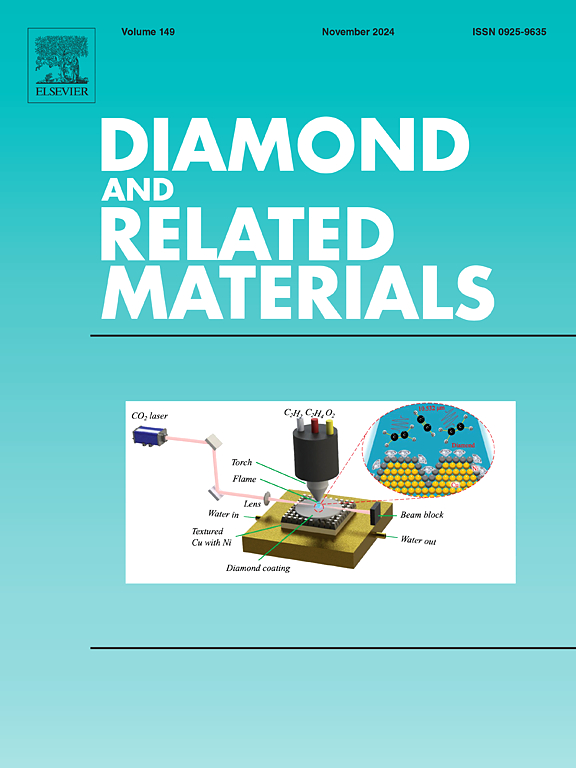温度对石墨烯、氧化石墨烯和纳米二氧化硅改性胶凝复合材料纳米通道内NaCl迁移特性的影响:分子动力学研究
IF 4.3
3区 材料科学
Q2 MATERIALS SCIENCE, COATINGS & FILMS
引用次数: 0
摘要
不同温度下的有机涂层在盐溶液的作用下表现出不同的扩散行为。本研究通过分子动力学研究了NaCl溶液在水合硅酸钙(C-S-H)、C-S-H支化石墨烯(Gr)、官能化氧化石墨烯(GO-O、GO-OH和GO-COOH)和2d -二氧化硅(NS)等不同温度(250 K - 400 K)通道内的输运过程和侵蚀机制。结果表明:NaCl溶液在C-S-H通道中呈半新月形输运,随着温度的升高,溶液通过纳米通道的速度加快;温度升高导致扩散加剧,从而削弱了纳米材料与C-S-H之间的结合强度。Gr对水和离子有很强的斥力。随着温度的升高,GO-O逐渐从C-S-H表面分离,证明GO-O与C-S-H的相互作用逐渐减弱。NS发生聚集,形成较大的颗粒,降低流动性,升高温度有助于增加扩散。GO- oh和GO- cooh中的氧很容易接受氢键并与钠离子结合,从而将离子和水分子固定在GO表面。随着温度的升高,氢键距离增加,但RDF峰增加,表明分子间相互作用仍然很强,增强了材料的亲水性。密度泛函理论(DFT)研究表明,Gr、GO和NS对Ca2+、Na+、H₂O和Cl−的吸附为Ca2+>;Na+>H₂O >;Cl−。在各种材料中,水的扩散速率随温度的变化呈现出不同的顺序,特别是在高温下,某些材料具有更好的扩散特性。随着温度的升高,水分子与Ca2+的解离增加,导致C-S-H与纳米材料的结合强度降低。本文的研究将有助于揭示不同温度下C-S-H纳米孔中毛细管输送的微妙机制,从而为胶凝材料的设计和优化提供更科学的依据。更好地了解这些机理,我们可以进一步推动先进胶凝材料的发展,提高其在工程应用中的性能和耐久性。本文章由计算机程序翻译,如有差异,请以英文原文为准。
Effect of temperature on NaCl migration properties within nano-channels of graphene, graphene oxide, and nano-silica modified cementitious composites: A molecular dynamics study
Organic coatings at different temperatures exhibit different diffusion behaviors under the attack of salt solutions. The present study investigates the transport processes and erosion mechanisms of NaCl solutions within the channels of calcium silicate hydrated (C-S-H), C-S-H branched graphene (Gr), functionalized graphene oxide (GO-O, GO-OH and GO-COOH) and 2D-silica (NS) at different temperatures (250 K–400 K) by molecular dynamics. The results obtained demonstrate that the NaCl solution exhibits a half-crescent shape transport in the C-S-H channels and that the solution can pass through the nano-channels at a faster rate as the temperature increases. Elevated temperature increases diffusion, which weakens the bonding strength between the nanomaterials and C-S-H. Gr exhibits a strong repulsion of water and ions. GO-O gradually separates from the C-S-H surface with increasing temperature, proving that its interaction with C-S-H is slowly weakened. Aggregation of NS occurs, forming larger particles to reduce fluidity, and increasing temperature helps to increase diffusion. Oxygen in GO-OH and GO-COOH readily accepts hydrogen bonds and binds to sodium ions, thus immobilizing ions and water molecules on the GO surface. As the temperature increases, the distance of hydrogen bonding increases, but the RDF peak increases, showing that the intermolecular interactions remain strong, which enhances the hydrophilicity of the material. Density Functional Theory (DFT) studies have shown that the adsorption of Ca2+, Na+, H₂O and Cl− by Gr, GO and NS are Ca2+>Na+>H₂O > Cl−.The rate of diffusion of water shows a different order with temperature in various materials, especially at high temperatures where certain materials have better diffusion properties. The dissociation of water molecules and Ca2+ increases with increasing temperature, leading to a decrease in the binding strength between C-S-H and the nanomaterials. The study in this paper will help to reveal the subtle mechanisms of capillary transport in C-S-H nanopores at different temperatures, thus providing a more scientific basis for the design and optimization of cementitious materials. With a better understanding of these mechanisms, we can further promote the development of advanced cementitious materials and enhance their performance and durability in engineering applications.
求助全文
通过发布文献求助,成功后即可免费获取论文全文。
去求助
来源期刊

Diamond and Related Materials
工程技术-材料科学:综合
CiteScore
6.00
自引率
14.60%
发文量
702
审稿时长
2.1 months
期刊介绍:
DRM is a leading international journal that publishes new fundamental and applied research on all forms of diamond, the integration of diamond with other advanced materials and development of technologies exploiting diamond. The synthesis, characterization and processing of single crystal diamond, polycrystalline films, nanodiamond powders and heterostructures with other advanced materials are encouraged topics for technical and review articles. In addition to diamond, the journal publishes manuscripts on the synthesis, characterization and application of other related materials including diamond-like carbons, carbon nanotubes, graphene, and boron and carbon nitrides. Articles are sought on the chemical functionalization of diamond and related materials as well as their use in electrochemistry, energy storage and conversion, chemical and biological sensing, imaging, thermal management, photonic and quantum applications, electron emission and electronic devices.
The International Conference on Diamond and Carbon Materials has evolved into the largest and most well attended forum in the field of diamond, providing a forum to showcase the latest results in the science and technology of diamond and other carbon materials such as carbon nanotubes, graphene, and diamond-like carbon. Run annually in association with Diamond and Related Materials the conference provides junior and established researchers the opportunity to exchange the latest results ranging from fundamental physical and chemical concepts to applied research focusing on the next generation carbon-based devices.
 求助内容:
求助内容: 应助结果提醒方式:
应助结果提醒方式:


